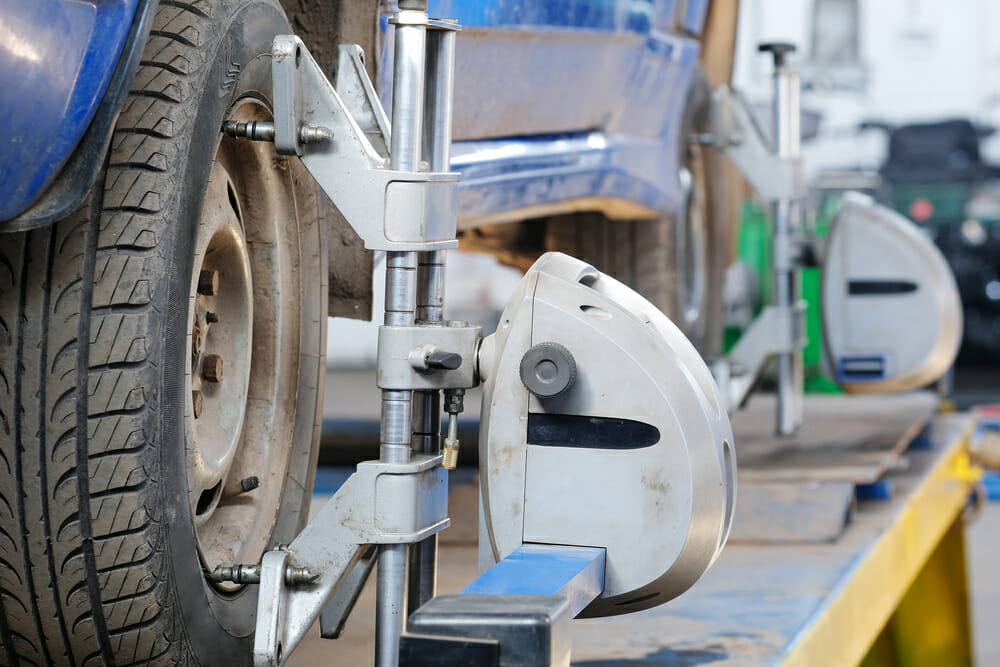How Long Does It Take For A Car Alignment

One of the most frequently asked questions in automotive repair shops revolves around a seemingly simple procedure: wheel alignment. But how long does it actually take for a car alignment? The answer, as with many things automotive, isn't a straightforward figure. It depends on a multitude of factors, ranging from the type of alignment needed to the condition of your vehicle's suspension components.
Understanding the Basics: What's a Wheel Alignment?
Before diving into the timing, let's quickly recap what a wheel alignment entails. Simply put, it's the process of adjusting the angles of your vehicle's wheels so that they are parallel to each other and perpendicular to the road. The primary angles adjusted are camber (the inward or outward tilt of the wheel when viewed from the front), caster (the angle of the steering axis when viewed from the side), and toe (the inward or outward pointing of the wheels when viewed from above). Correct alignment is crucial for even tire wear, optimal handling, and fuel efficiency.
Typical Alignment Time: A General Estimate
In most cases, a standard wheel alignment takes between 30 minutes to an hour. This assumes that the vehicle is in good condition, all suspension components are functioning correctly, and no seized bolts or other complications are present. This timeframe generally covers the initial inspection, mounting the alignment heads (sensors that measure wheel angles), making necessary adjustments, and a final test drive to ensure everything is within specifications.
Factors That Influence Alignment Time
Several factors can significantly extend the alignment process. These include:
- Vehicle Type and Complexity: Some vehicles, particularly those with advanced suspension systems like independent rear suspension (IRS) or adaptive damping, can require more time due to the complexity of adjustments.
- Extent of Misalignment: A vehicle that is severely out of alignment will naturally require more time to correct. If the alignment is only slightly off, adjustments are quicker.
- Suspension Component Condition: Worn ball joints, tie rod ends, control arm bushings, or struts/shocks can all impede the alignment process. These components might need replacement *before* a proper alignment can be achieved, adding significant time and cost. A pre-alignment inspection is crucial to identify these issues.
- Seized or Rusted Components: One of the most common time-consuming problems is seized or rusted adjustment bolts. These bolts might require penetrating oil, heat, or even replacement, adding considerable time to the job. In severe cases, the mechanic might need to use specialized tools to extract the damaged bolt.
- Alignment Type: There are different types of alignment, each requiring varying amounts of time:
- Two-Wheel Alignment: This involves aligning only the front wheels, typically used on older vehicles with a solid rear axle. This is generally faster than a four-wheel alignment.
- Four-Wheel Alignment: This aligns all four wheels, ensuring they are all properly oriented relative to each other. This is the most common and recommended type of alignment, especially for vehicles with independent rear suspension.
- Thrust Angle Alignment: This ensures that the rear axle is perpendicular to the vehicle's centerline, crucial for proper tracking.
- Shop Equipment and Expertise: A well-equipped shop with experienced technicians will generally be able to perform alignments more efficiently than a shop with older equipment or less experienced staff. Modern alignment machines with computerized systems can also speed up the process.
Real-World Examples and Time Estimates
- Example 1: A late-model sedan with a minor misalignment and no underlying issues should take approximately 45 minutes for a four-wheel alignment.
- Example 2: An older pickup truck with rusted suspension components and seized alignment bolts could take several hours, or even require a multi-day repair if parts need to be ordered.
- Example 3: A sports car with adjustable camber plates and a performance-oriented alignment specification could also take longer, as the technician will be aiming for very precise settings.
The Importance of a Pre-Alignment Inspection
To avoid surprises and unexpected delays, always request a pre-alignment inspection. This allows the mechanic to identify any worn or damaged suspension components that might affect the alignment. Addressing these issues *before* the alignment will ultimately save time and money in the long run, and ensure that the alignment is accurate and long-lasting.
Conclusion
While the average car alignment typically takes around 30-60 minutes, it's essential to remember that this is just an estimate. The actual time can vary significantly based on the factors discussed above. By understanding these variables and being prepared for potential complications, you can better manage your expectations and ensure a smooth and successful alignment process for your vehicle. Always communicate openly with your mechanic and ask questions about the procedure to ensure you receive the best possible service.
